The Texas Panhandle is the land of big skies, big farms, big men and women, enormous pickup trucks, and fading towns and farm houses. The Panhandle is the northern rectangle of the state, bordered by Oklahoma and New Mexico, northwest of the Dallas/Fort Worth metropolis. Most people drive through in a hurry, but the area offers a wealth of photographic topics. The famous Route 66 crosses the northern Panhandle.
Highway US 287 takes you from Dallas to Amarillo and passes through a number of small towns. These were bustling and active up through the mid-20th century but today are slowly fading. I drove east on US 287 in 2017 and saw numerous abandoned farm houses that caught my eye. I promised to return and record them before they disappeared. For a trip west this year (2019), I loaded my Hasselblad and Kodak Tri-X film into my camera bag, but at the last minute added my little Yashica Electro 35CC with one of my remaining rolls of discontinued Kodak Ektar 25. Long-term readers may recall that I have experimented with Ektar 25 before and concluded that it is well past its prime. Of course, I am unable to follow my own advice and decided to use it for this trip to the Southwest. For the trip west in September, I took my time, stayed in seedy motels long past their prime, and enjoyed warm summery weather (I almost stepped on a rattlesnake in my sandals). A month later, an ice storm was threatening and I drove back east in a hurry.
Photographs from the Panhandle
Here are a selection of pictures from the great open spaces of Texas. The captions will note the locations. In a future article, I will share some of my medium format Tri-X frames. Also, I can share some Route 66 (known as the Mother Road) photographs.
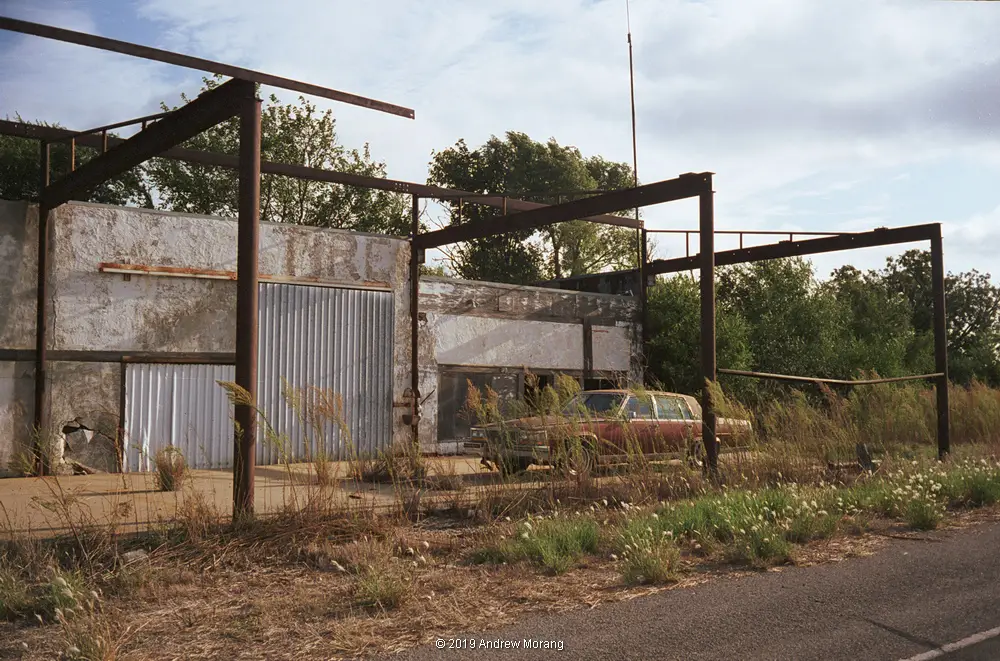
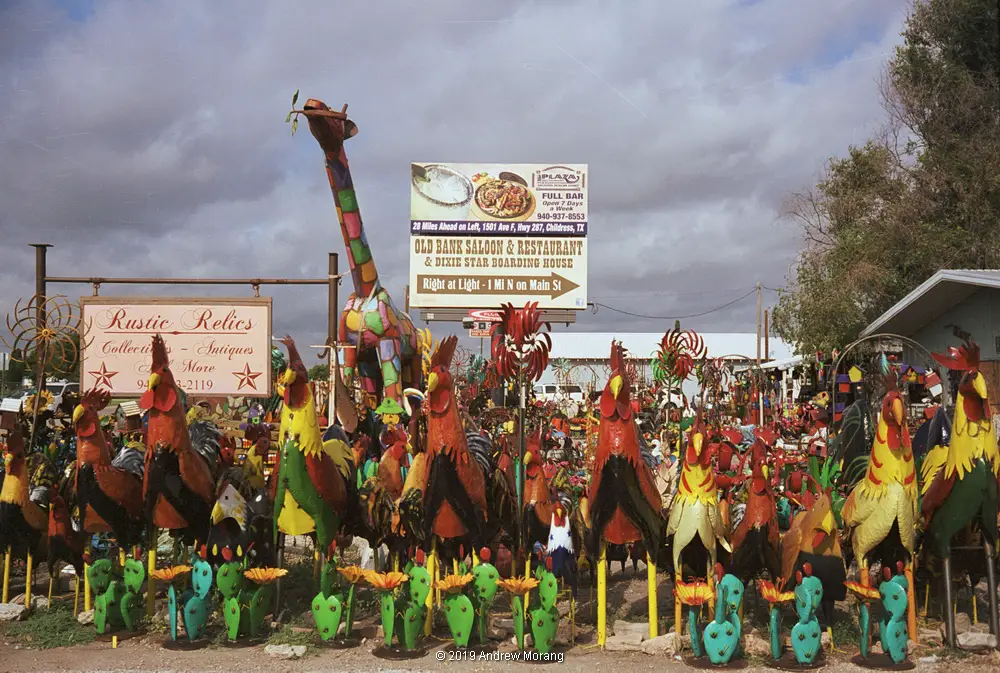
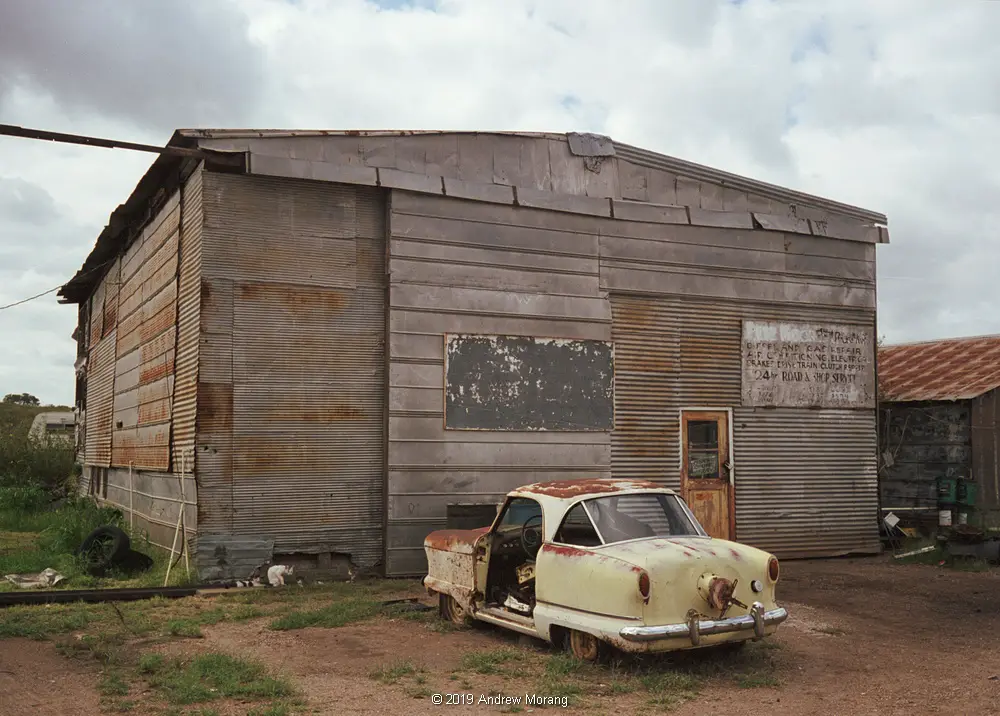
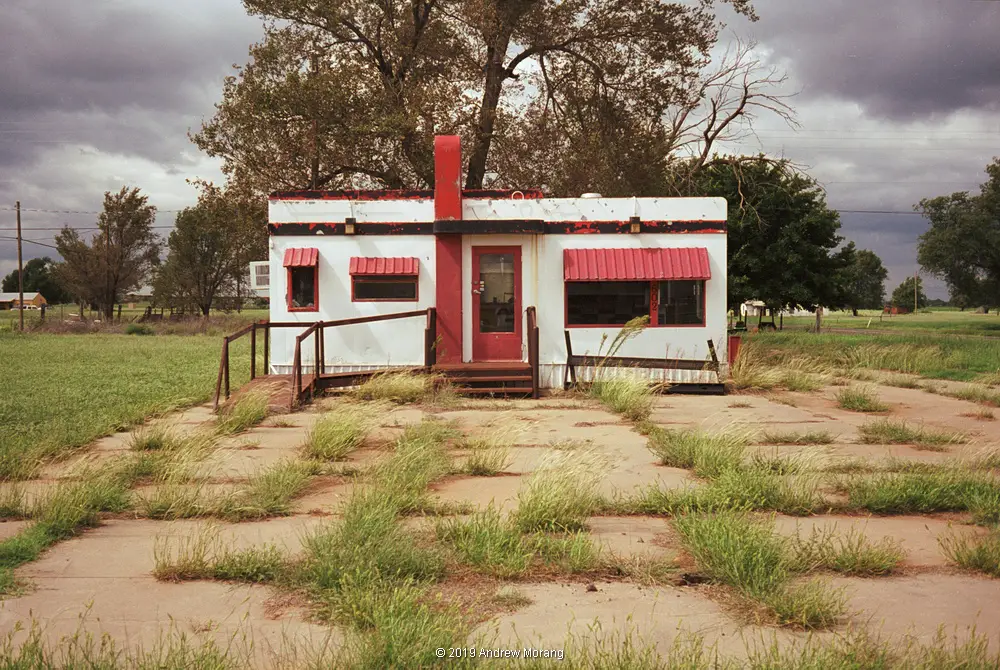
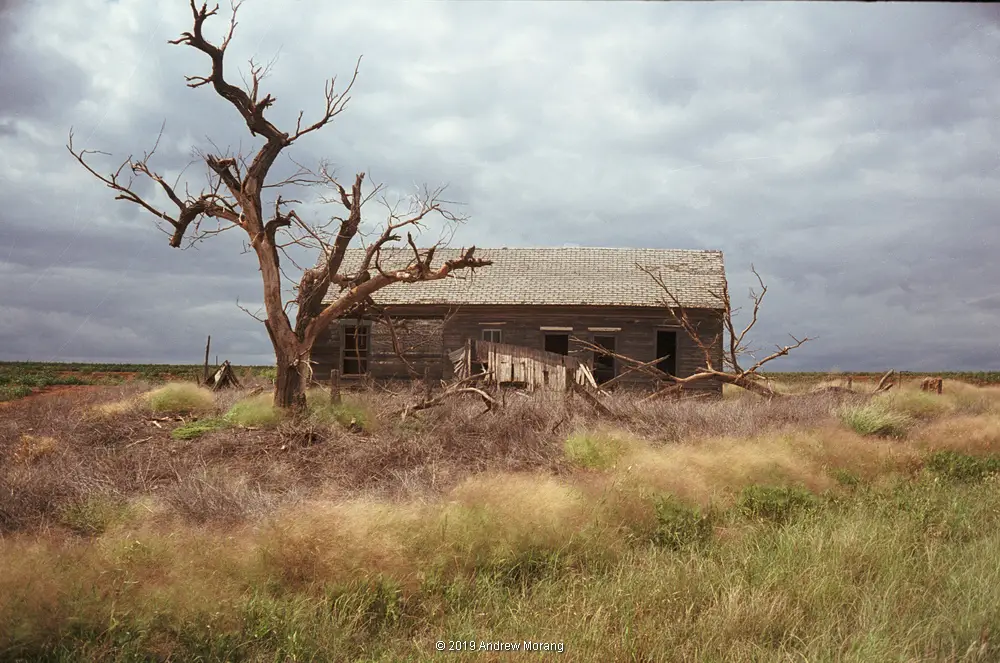
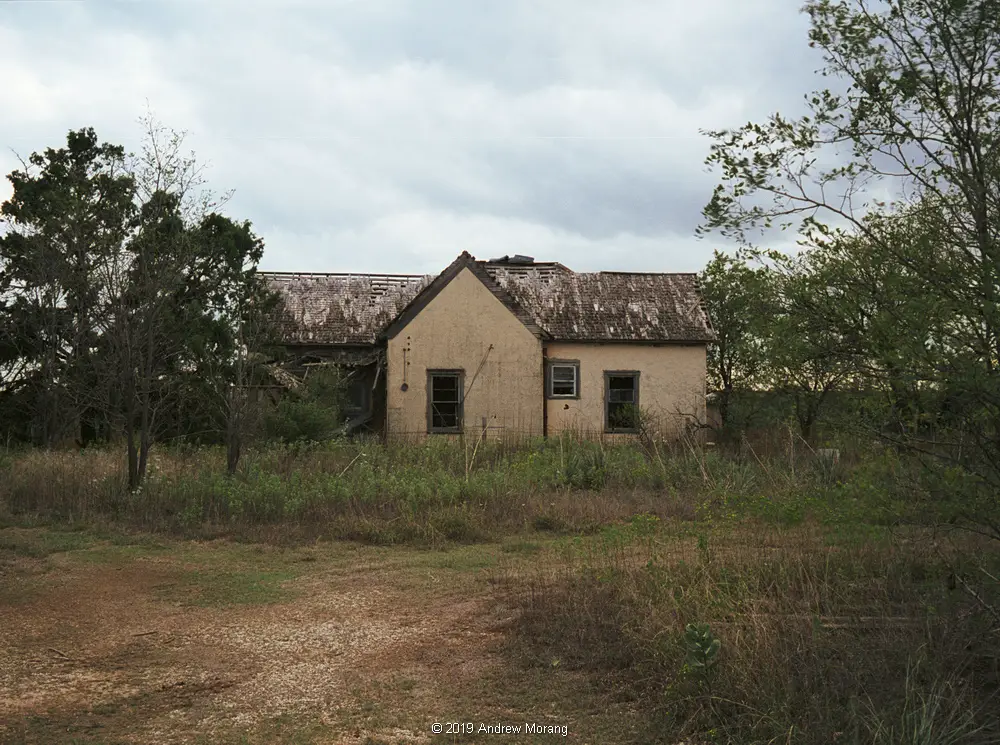
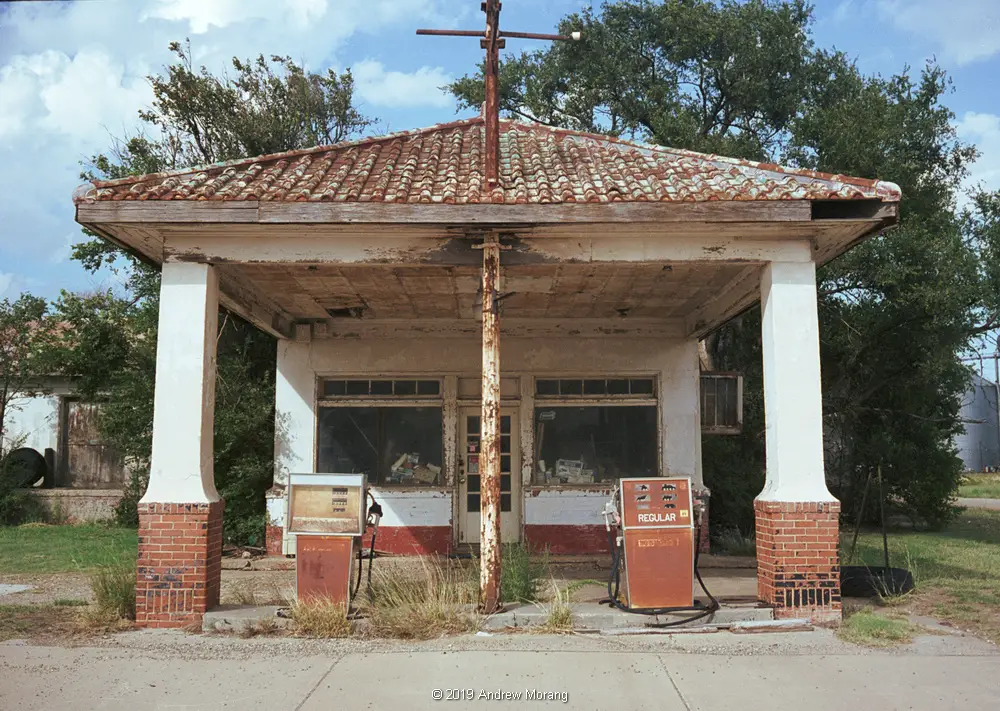
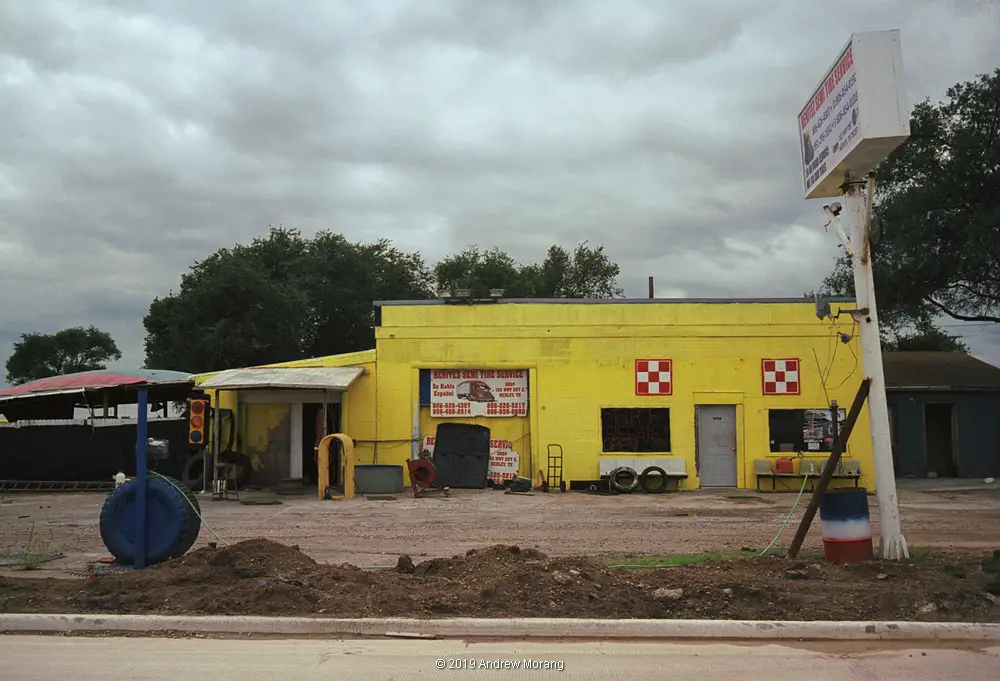
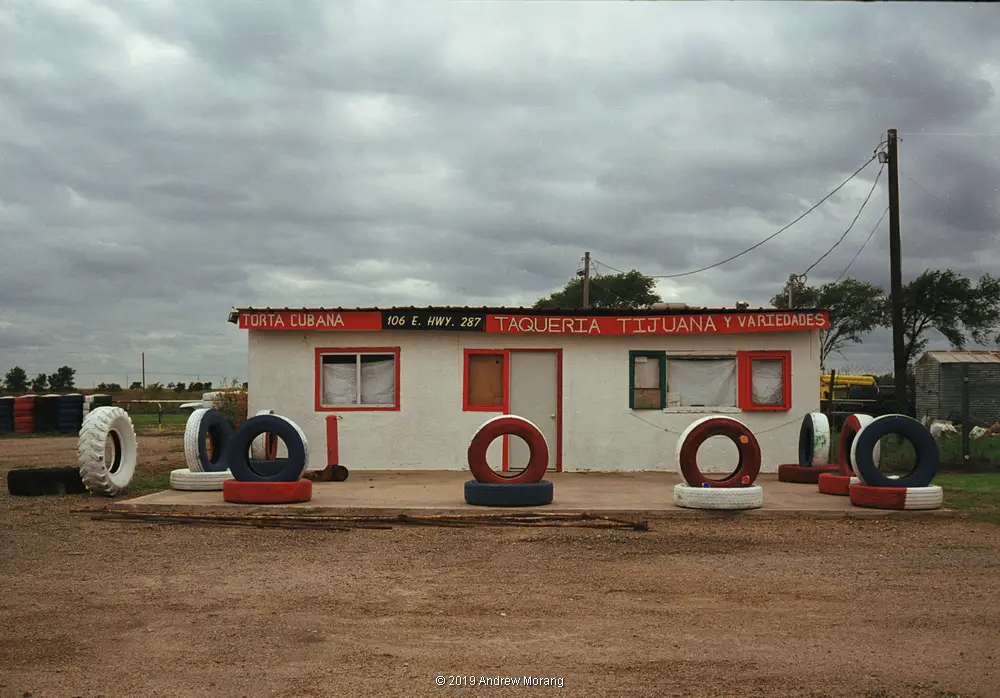
Techical Notes
I took these exposures with a Yashica Electro 35CC camera with a fixed 35mm f/1.8 Color-Yashinon lens. This is a handy compact camera with an excellent lens and a genuine rangefinder. “Color” was the advertising buzzword in the 1970s and 1980s. Today, it would be “digital.” I scanned the film at 3,600 dpi with a Plustek 7600i film scanner using Silverfast Ai software to control the unit. I saved the scans as 16-bit TIFF files. The Silverfast does not have an Ektar 25 profile, but I found that the Royal Gold 1000 profile worked reasonably well. The colors were off, and I sometimes used the grey dropper to select a grey area on the frame as a reference. Some of the colors are slightly odd, but it suits the subject matter (and if I wanted boring perfection, I could use a digital camera or mobile phone). A few frames needed some cleaning or scratch removal; Pixelmator 3.8.8 has one of the best healing tools that I have tried. To resize for this article, I used an old version of ACDSee Pro 2.5 running under Windows XP.
Summary
Texas is a lot of fun for a photographer. The people are friendly and travel is easy. There are plenty of gasoline stations along the way. But beware, other than fast food, the Panhandle is a food desert outside of Amarillo and Wichita Falls. It is even more of a coffee desert (with the surprising exception of the Turquoise Coffee Shop in Chillicothe). Take a thermos and brew your own. Also, watch out for rattlesnakes.
For more urban and rural decay from Texas, Mississippi, and other places, please look at my blog: https://worldofdecay.blogspot.com. Thank you!
Update: I posted some more photographs taken with Ektar 25 from in and around Vicksburg, Mississippi (please click the link).
Share this post:








Comments
scottfotodotcom on Kodak Ektar 25 – Urban/Rural Decay in the Texas Panhandle – by Andrew Morang
Comment posted: 21/12/2019
Terry B on Kodak Ektar 25 – Urban/Rural Decay in the Texas Panhandle – by Andrew Morang
Comment posted: 21/12/2019
Roger B. on Kodak Ektar 25 – Urban/Rural Decay in the Texas Panhandle – by Andrew Morang
Comment posted: 21/12/2019
Graham Line on Kodak Ektar 25 – Urban/Rural Decay in the Texas Panhandle – by Andrew Morang
Comment posted: 21/12/2019
Lilianna Diane Elrod on Kodak Ektar 25 – Urban/Rural Decay in the Texas Panhandle – by Andrew Morang
Comment posted: 21/12/2019
Ken Tuomi on Kodak Ektar 25 – Urban/Rural Decay in the Texas Panhandle – by Andrew Morang
Comment posted: 21/12/2019
Comment posted: 21/12/2019
Peter on Kodak Ektar 25 – Urban/Rural Decay in the Texas Panhandle – by Andrew Morang
Comment posted: 21/12/2019
Comment posted: 21/12/2019
Alvaro on Kodak Ektar 25 – Urban/Rural Decay in the Texas Panhandle – by Andrew Morang
Comment posted: 21/12/2019
Comment posted: 21/12/2019
Comment posted: 21/12/2019
Comment posted: 21/12/2019
Comment posted: 21/12/2019
Dorian on Kodak Ektar 25 – Urban/Rural Decay in the Texas Panhandle – by Andrew Morang
Comment posted: 22/12/2019
Nathalie Porter on Kodak Ektar 25 – Urban/Rural Decay in the Texas Panhandle – by Andrew Morang
Comment posted: 22/12/2019
Castelli Daniel on Kodak Ektar 25 – Urban/Rural Decay in the Texas Panhandle – by Andrew Morang
Comment posted: 22/12/2019
It’s just not the current status of your past date film, I’ve seen it in work of other photographers working with color film.
Comment posted: 22/12/2019
Charles Higham on Kodak Ektar 25 – Urban/Rural Decay in the Texas Panhandle – by Andrew Morang
Comment posted: 23/12/2019
Comment posted: 23/12/2019
In Praise of Kodak Tri-X; Five Decades and Counting - by Andrew Morang - 35mmc on Kodak Ektar 25 – Urban/Rural Decay in the Texas Panhandle – by Andrew Morang
Comment posted: 06/05/2020